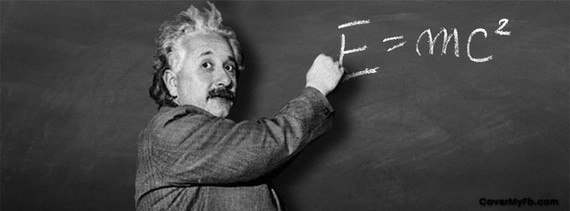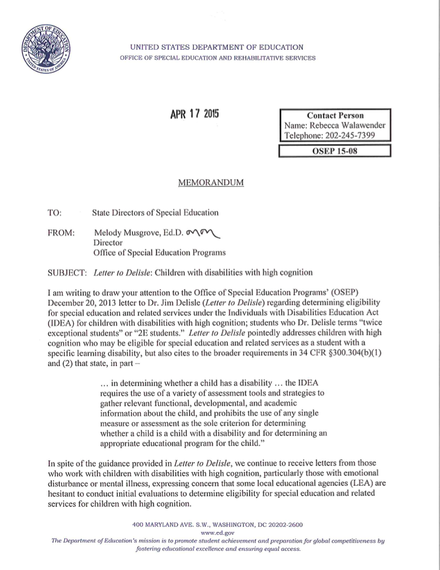"Yes we see that he has trouble reading fluently and has trouble with writing and has been diagnosed with dyslexia and dysgraphia, but he is meeting minimum grade expected levels..."
"We agree that your daughter has challenges with focus and attention and was diagnosed with ADHD but she is doing fine compared to other kids in her class. We have so many who struggle so much more..."
"I understand that your child has Asperger's Disorder and has trouble with social skills and transitioning but he is doing fine academically..."
After attending countless IEP (Individualized Education Plan), 504, SST (Student Success Team), and RTI (Response to Intervention) meetings over the years, I now hear these phrases in my sleep. And I usually wake up with a start and a grimace as I recall what almost always is the final sentence, "Your child does not qualify for an IEP or Section 504 Plan."
I have been testing and advocating for children and students for approximately 20 years as a psychologist and also as a father of three. Over the years when students struggled in the classroom - with learning or behavior - they were referred for comprehensive testing, and then after I provided results he or she usually qualified for a special education plan through an IEP or 504 Plan to address their identified needs. It is just the way it was and it worked.
Then, about 10 years ago things changed.
A perfect storm was unfolding. Following on the heels of the No Child Left Behind Act (NCLB) in 2001, the Individuals with Disabilities Education Act (IDEA) was re-written and re-authored in 2004. A new program called Response to Intervention (RTI) came to the fore, and then the U.S. Economy, and the education budget, was in decline.
The goal of RTI was to intervene in the classroom for all kids who were having problems learning and not performing to grade level standards, rather than waiting for them to qualify for special education. This program was created to help struggling learners receive intervention early, and in their classrooms, in order to keep up with grade expectations. This program served several purposes - it helped all kids who were identified as struggling learners and reduced the need for comprehensive assessment from school psychologists to determine the presence of a disability. This program has worked for many children, but has largely failed the kids we call and categorize as 2e (twice-exceptional).
Why?
2e students are both gifted in one or more areas of intellect, academic, performing arts, visual arts, and/or leadership ability, AND also have a disability in one or more areas of learning, processing, emotional, developmental, and/or physical ability. Thus, 2e students fall at both ends of the bell curve. Put another way, they are both hot and cold, or both advanced and behind.
You know these kids. They have advanced verbal and reasoning abilities and sound like an adult or professor, yet lose their homework, don't track time, have sloppy handwriting, and can't sit still. They build amazing and intricate Lego designs but can't spell. They are experts in topics of their interest and can't remember basic math facts. They are amazing artists who can't be with crowds (or in bustling classrooms!), avoid people, do not tolerate loud sounds, and have limited food preferences.
So why don't these kids get tested and qualified for special education like others with needs?
It is because education policy (NCLB and RTI) became focused on getting all kids to meet "minimum grade level requirements" and a policy driven effort to intervene in the classroom for all struggling learners, rather than waiting for them to qualify for an IEP. I want as many children helped as possible and many of these initiatives for the masses do help.
However, 2e kids have fallen through the cracks since they are able to compensate, due to their advanced cognitive abilities, to perform at an ever-sliding acceptable statistic of "grade level" (today some states and districts have set the cut-off as low as the 12th or 16th percentile as meeting minimum grade level standards). Here's the problem: If bright kids do not perform below grade expected levels, they are not seen as having a problem, don't receive intervention, and don't get referred for comprehensive assessment for special education eligibility.
As a result, 2e students have been missed, misunderstood, and marginalized. The consequences are significant - underachievement, depression, anxiety, behavioral problems, low self-esteem, and school drop out.
It has been about 2 and a half years since a small group of colleagues met with the Melody Musgrove, Director of Special Education, and Michael Yudin, Acting Assistant Secretary of Office of Special Education and Rehabilitative Services to present our paper Critical Issues in the Identification of Gifted Students With Co-Existing Disabilities: The Twice-Exceptional (Sage Open) and to discuss 2e students not receiving IEPs and 504s.
It's been one year since I posted here on HuffPost Gifted+Learning Disabled = No Desk For You, Says New Study when I discussed The National Center for Learning Disabilities data from the U.S. Department of Education that "students with learning and attention issues are shut out of gifted and AP programs, held back in grade level and suspended from school at higher rates than other students."
It is now 2015 and it is time for educators to stop looking the other way, to stop saying "she is fine enough" "he is meeting grade expected levels," and "your child is doing much better than other kids with problems" and for students with real and legitimate diagnoses of ADHD, dyslexia, dysgraphia, auditory processing disorder, sensory processing disorder, or autistic spectrum disorder to receive the evaluations and ultimately the educational help they qualify for.
Last week Melody Musgrove released a letter to all State Special Education Directors across the U.S. to disseminate crucial information. Her letter states all children and families have the legal right to an evaluation.
...in determining whether a child has a disability...the IDEA requires the use of a variety of assessment tools and strategies to gather relevant functional, developmental, and academic information about the child, and prohibits the use of any single measure or assessment as the sole criterion for determining whether a child is a child with a disability and for determining an appropriate educational program for the child."
Ms. Musgrove adds, ..."we continue to receive letters from those who with children with disabilities with high cognition...expressing concern that some local educational agencies (LEA) are hesitant to conduct initial evaluations to determine eligibility for special education and related services for children with high cognition...remind each LEA of its obligation to evaluate all children, regardless of cognitive skills, suspected of having one of the 13 disabilities..."
Make 2015 the year that 2e kids stop struggling daily, stop underachieving, stop falling behind, stop experiencing anxiety, depression, and low self-concept and self worth and start to flourish because they have comprehensive assessments, appropriate education plans, interventions and accommodations.
Your child has a right to get help and learn - and not get left behind -- just like every other student.


